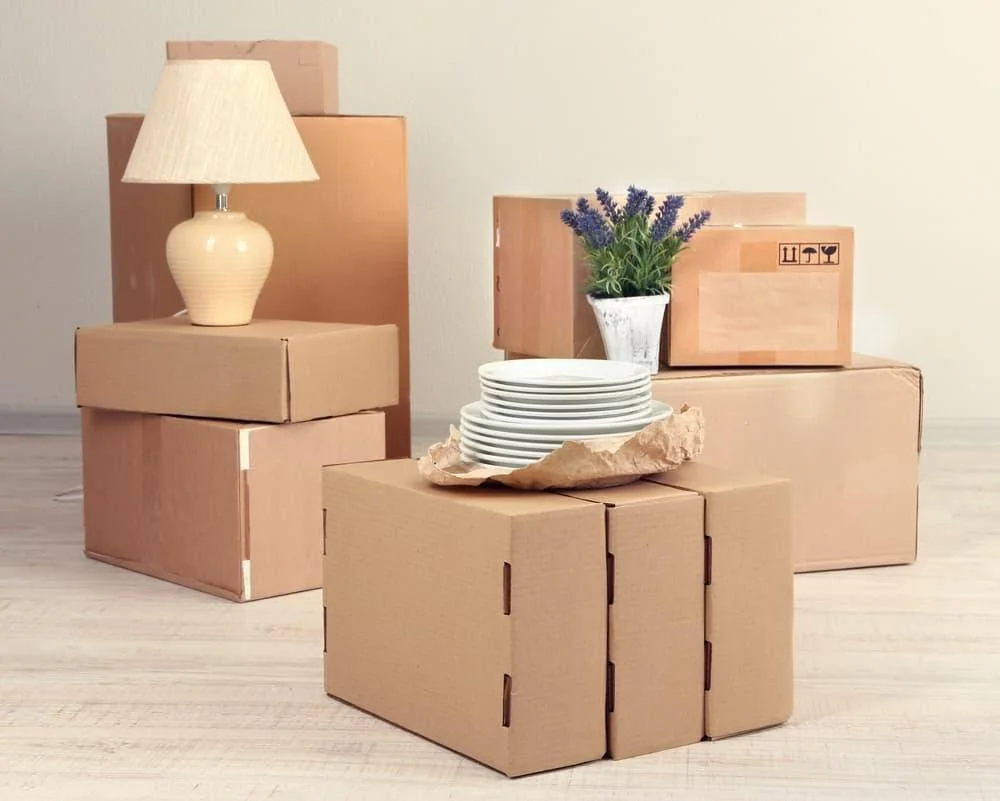When it comes to planning a house clearance, there are many factors to consider. From deciding what items to keep or get rid of, to finding the best way to dispose of unwanted belongings, the process can quickly become overwhelming.
However, with careful planning and organization, clearing out your house doesn’t have to be a daunting task. In fact, it can even be an opportunity to declutter and start fresh in your living space.
In this article, we will discuss the best way to plan a house clearance. We will cover everything from creating a timeline and sorting through belongings, to choosing the most efficient method of disposal.
Best Ways to Plan a House Clearance
Planning a house clearance can be broken down into several key steps. By following these steps, you can ensure that the process goes smoothly and efficiently.
Start by creating a timeline:
One of the first steps in planning a house clearance is to create a timeline. This will help you stay organized and ensure that you have enough time to complete each task before your designated moving date.
Start by deciding on a specific date for when you want to move out of your current home. This will serve as your deadline for completing the house clearance. From there, work backwards and assign tasks to each day leading up to the moving date.
Sort through belongings:
Once you have a timeline in place, it’s time to start sorting through your belongings. This can be the most time-consuming part of the house clearance process, so it’s important to allocate enough time for this task.
Start by creating three designated piles: keep, donate/sell, and dispose. As you go through each room in your house, decide which items you want to keep and which ones you no longer need. Consider donating or selling items that are still in good condition but may not serve a purpose in your new home. As for items that cannot be reused, dispose of them responsibly.
Choose the most efficient disposal method:
When it comes to disposing of unwanted belongings, there are several options available. Some common methods include hiring a waste removal company, renting a dumpster, or using a skip bag.
Research and compare the different methods to find the most cost-effective and convenient option for your specific needs. Keep in mind that some items may require special disposal methods, such as hazardous materials or large furniture.
Consider hiring professionals:
If sorting through belongings and disposing of them seems like too much to handle, consider hiring professionals to assist with the house clearance. They can help with packing, organizing, and disposing of items, making the process much easier for you.
Be sure to research and compare different companies to find one that is reputable and offers competitive pricing.
Don’t forget about sentimental items:
While it’s important to declutter and downsize during a house clearance, don’t forget about sentimental items. These can include family heirlooms, photos, and other mementos that hold special meaning.
Be sure to designate a specific box or container for these items so they don’t accidentally get thrown away during the sorting process.
Make arrangements for pets:
If you have pets, it’s important to make arrangements for them during the house clearance process. Moving can be stressful for animals, so it’s best to plan ahead and ensure their safety and comfort.
If possible, try to keep your pets in a quiet and familiar room while you sort through belongings and dispose of unwanted items. This will help minimize their stress levels and prevent them from getting in the way.
Keep track of important documents:
During a house clearance, it’s easy for important documents to get lost or thrown away. Make sure to keep all important paperwork, such as birth certificates, passports, and financial documents, in one designated folder or box.
It may also be helpful to create digital copies of these documents and store them on a secure device or cloud storage for safekeeping.
Tips for a Successful House Clearance
Here are some additional tips to ensure a successful house clearance:
Start early:
Starting the house clearance process early will give you more time to properly sort through your belongings, make arrangements for disposing of unwanted items, and handle any unexpected obstacles that may arise.
It is recommended to start at least a few months in advance, especially if you have a large amount of clutter. This will also give you enough time to research and compare different disposal methods, as well as hire professionals if needed.
Stay organized:
Staying organized is crucial when it comes to planning a successful house clearance. With so many tasks and decisions to make, it’s easy to become overwhelmed and lose track of important details. One way to stay organized is by creating a checklist or spreadsheet that outlines all the necessary steps and deadlines for your house clearance.
This will serve as a helpful guide throughout the process and help you stay on track. Make sure to keep all important documents and paperwork in one designated area. This will prevent them from getting lost or thrown away during the sorting process.
Enlist help:
Don’t be afraid to ask for help during a house clearance. It can be a physically and emotionally taxing process, so having friends or family members assist can make a big difference.
You can also consider hiring professionals for specific tasks, such as packing or disposing of large items. This will help take some of the workload off your shoulders and make the process more manageable.
Be mindful of the environment:
When disposing of unwanted items, it’s important to be mindful of the environment. Avoid throwing away hazardous materials or electronics in regular trash bins as they can harm the environment. Research and utilize proper disposal methods for these items, such as recycling or taking them to a designated facility.
You can also consider donating unwanted items to charities or organizations that support environmental causes. This not only helps reduce waste but also gives back to the community.
Take breaks:
Planning a house clearance can be physically and mentally draining, so remember to take breaks and give yourself time to rest. It’s important to prioritize self-care during this process.
Take breaks when needed, stay hydrated, and don’t push yourself too hard. This will help prevent burnout and make the process more manageable in the long run.
Stay positive:
Lastly, remember to stay positive throughout the house clearance process. While it may be a challenge, it’s also an opportunity to declutter and start fresh in a new home.
Try to focus on the end goal and the benefits of downsizing. Celebrate small victories along the way and don’t be too hard on yourself if things don’t go exactly as planned. With proper planning and a positive mindset, you can successfully complete your house clearance with minimal stress and hassle.
Common mistake to avoid when planning a house clearance
Here are some common mistakes that people make when planning a house clearance. Avoiding these mistakes can help ensure a smooth and efficient process.
Not allocating enough time:
One of the biggest mistakes people make is not giving themselves enough time to plan and execute their house clearance. Sorting through belongings, finding disposal methods, and making arrangements for pets and important documents all take time. It’s important to start early and give yourself ample time to handle these tasks.
Underestimating the amount of clutter:
Another mistake is underestimating the amount of clutter you have in your home. This can lead to rushed decisions and potentially getting rid of items that you actually wanted to keep. It’s important to take a thorough inventory of your belongings and plan accordingly.
Holding onto sentimental items:
While it can be difficult, it’s important to prioritize practicality over sentimentality when it comes to house clearance. Holding onto too many sentimental items can make the process more challenging and time-consuming. Try to limit yourself to a certain number of sentimental items and find alternative ways to preserve memories, such as creating a digital photo album.
Not seeking professional help:
Many people try to handle a house clearance on their own, but it can be a daunting and overwhelming task. Don’t be afraid to seek professional help for specific tasks, such as packing or disposing of large items. This will make the process more manageable and efficient.
Neglecting to properly dispose of hazardous materials:
Disposing of hazardous materials, such as chemicals or electronics, in regular trash bins can harm the environment. It’s important to research and utilize proper disposal methods for these items to protect the environment.
Procrastinating:
Procrastination is a common mistake when it comes to any task, including planning a house clearance. Avoiding procrastination and starting early will give you more time to properly sort through your belongings and make arrangements, ultimately making the process less stressful.
FAQs
What is the best way to plan a house clearance?
Explore effective strategies for planning a house clearance and understand the role of hiring a professional house clearance company in ensuring efficiency and organization. Learn how professionals manage items with sentimental or emotional value, contributing to a smooth and considerate house clearing process.
How does a house clearance guide assist in planning and executing an efficient house clearance?
Understand how a house clearance guide can assist in planning and executing an efficient house clearance. Explore the considerations involved in coordinating with local councils for bulky waste collection during the clearance project, ensuring a seamless collaboration with municipal services.
Is it advisable to hire a house clearance service?
Explore the advisability of hiring a house clearance service and understand the key factors to consider when choosing a professional house clearance company. Learn about the responsible and ethical disposal practices of a reputable clearance company, ensuring the proper handling of unwanted household items during the clearance process.
Conclusion:
Planning a house clearance can be a challenging and overwhelming task. However, by staying organized, enlisting help, being mindful of the environment, taking breaks, and maintaining a positive mindset, you can successfully navigate through this process.
It’s also important to avoid common mistakes such as not allocating enough time, underestimating clutter, holding onto sentimental items, neglecting professional help, and procrastinating. With proper planning and a proactive approach, you can make your house clearance as stress-free and efficient as possible.






